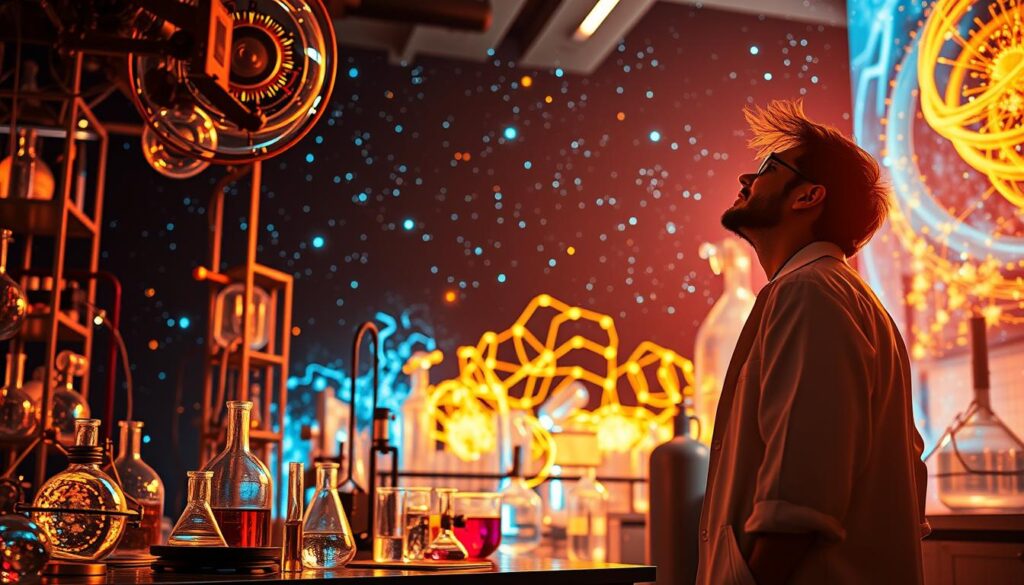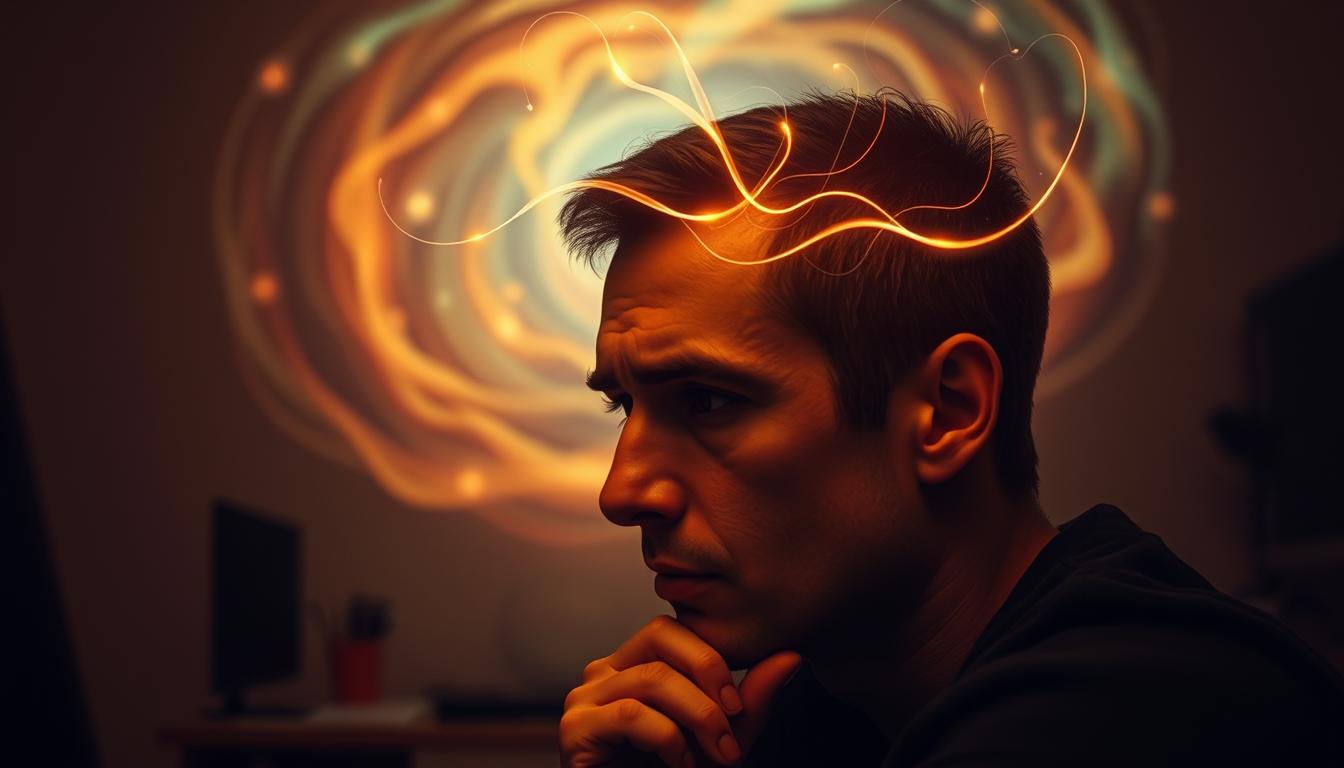Have you ever had a gut feeling that guided you in the right direction? That moment when your mind seems to know something before you can fully explain it? This is the power of intuition, a natural ability we all possess. It’s more than just a feeling—it’s a process that helps us make decisions in a complex world.
Throughout history, many great thinkers have relied on their intuition to make breakthroughs. From Galileo’s celestial observations to Giorgio Parisi’s work on complex systems, intuition has played a key role in shaping our understanding of the world. It’s not just about logic; it’s about tapping into a deeper sense of knowing.
In today’s fast-paced world, intuition can help us navigate overwhelming information and make quick, confident choices. Whether it’s a personal decision or a creative idea, trusting your gut can lead to meaningful outcomes. This article will explore how you can tune into your own psi abilities and harness the power of intuition in your everyday life.
Key Takeaways
- Intuition is a natural ability that helps guide decision-making.
- Historical figures like Galileo and Parisi relied on intuition for breakthroughs.
- Trusting your gut can lead to better choices in complex situations.
- Intuition is a blend of feeling and logical thinking.
- Developing intuition requires practice and self-awareness.
Understanding the Roots of Intuition in Science
Throughout history, some of the most profound ideas began with a spark of intuition. From the mathematical breakthroughs of Poincaré to Galileo’s celestial observations, intuition has played a pivotal role in shaping our understanding of the world. It’s not just about logic; it’s about tapping into a deeper sense of knowing.

Take Henri Poincaré, for example. He described his creative process as a series of phases: preparation, incubation, and sudden illumination. During the incubation phase, he would step away from a problem, allowing his subconscious to work on it. Then, in a moment of clarity, the solution would appear, seemingly out of nowhere. This phenomenon, often called the “aha” moment, highlights the power of intuition in problem-solving.
Galileo’s work is another fascinating example. His intuition led him to link celestial and terrestrial phenomena, challenging the established views of his time. Despite skepticism, his gut feeling guided him to discoveries that revolutionized our understanding of the universe.
Historical Perspectives from Mathematics and Physics
In the early days of mathematics and physics, intuition was often the driving force behind breakthroughs. Jacques Hadamard, a renowned mathematician, emphasized the importance of subconscious thinking in his book, The Psychology of Invention in the Mathematical Field. He believed that the mind works in mysterious ways, often revealing solutions when least expected.
These historical examples show that intuition isn’t just a feeling—it’s a process. It involves preparation, patience, and trust in one’s inner voice. By understanding these roots, we can better appreciate the role of intuition in modern research and decision-making.
Moments of Illumination and Incubation
The journey from confusion to clarity often follows a similar path. First, there’s the preparatory work—gathering information and analyzing the problem. Then comes the incubation phase, where the mind processes the data subconsciously. Finally, there’s the moment of illumination, when everything clicks into place.
This process isn’t limited to scientists. Anyone can experience it in their daily lives. Whether you’re solving a complex problem or making a personal decision, trusting your intuition can lead to meaningful outcomes. For more insights on how to harness this ability, check out the detailed guide here.
By exploring these historical perspectives, we gain a deeper understanding of how intuition has shaped the world. It’s a reminder that sometimes, the best way forward is to listen to that inner voice.
Exploring Intuitive Science in Modern Research
Modern studies are increasingly blending empirical data with subconscious insights. This shift highlights the growing appreciation for gut instincts in scientific breakthroughs. Researchers are now exploring how intuition complements rigorous analysis, leading to innovative discoveries.

The Intersection of Empiricism and Gut Instincts
In fields like quantum mechanics, intuition often guides initial ideas. Carlo Rovelli, a physicist, emphasizes the role of gut feelings in formulating hypotheses. These ideas are later tested through empirical methods, creating a balance between instinct and evidence.
Neuroscience also supports this approach. Studies show that rapid, subconscious thinking can lead to accurate decisions. This phenomenon, known as Type 1 thinking, works alongside systematic analysis to solve complex problems.
Cultivating Intuition in Everyday Scientific Practice
Many researchers intentionally develop their intuitive skills. This involves trusting their gut feelings while remaining grounded in data. For example, a biologist might sense a pattern in data before fully analyzing it, leading to new insights.
Here’s how intuition and empiricism work together in research:
| Intuition | Empiricism | Outcome |
|---|---|---|
| Initial idea or hypothesis | Data collection and analysis | Innovative discovery |
| Subconscious pattern recognition | Systematic testing | Accurate conclusions |
| Trusting gut feelings | Rigorous validation | Balanced decision-making |
By cultivating intuition, scientists can enhance their problem-solving abilities. This approach not only speeds up the research process but also leads to more accurate results. For anyone looking to develop their own intuitive skills, practice and self-awareness are key.
Balancing Gut Feelings with Critical Analysis
Decisions often feel like a tug-of-war between instinct and logic. While gut feelings can guide us, critical analysis ensures we stay grounded in facts. This balance is essential, especially in fields like research and everyday problem-solving.

Type 1 vs. Type 2 Thinking in Decision Making
Psychologist Daniel Kahneman introduced the concepts of Type 1 and Type 2 thinking. Type 1 is fast, automatic, and intuitive. It’s what helps us make quick decisions based on experience. Type 2, on the other hand, is slow, deliberate, and analytical. It’s the process of carefully weighing options and evidence.
For example, a scientist might have a hunch about a new hypothesis (Type 1). But they’ll test it rigorously through experiments and data analysis (Type 2). This combination often leads to breakthroughs.
Filtering Insights with Scientific Rigor
Intuition can spark great ideas, but it’s not foolproof. That’s where scientific rigor comes in. By filtering gut feelings through critical analysis, we avoid biases and errors.
Take early quantum mechanics as an example. Heisenberg and Bohr relied on intuition to develop their theories. But they also subjected their ideas to intense scrutiny, ensuring they stood up to empirical testing.
Here’s how to balance intuition and analysis in your own life:
- Trust your gut, but always verify with data.
- Practice mindfulness to sharpen your intuitive skills.
- Use structured frameworks to guide critical thinking.
- Reflect on past decisions to learn from successes and mistakes.
By blending intuition with critical analysis, you can make smarter, more confident decisions. Whether you’re solving a complex problem or navigating daily life, this balance is key to success.
The Role of Creativity in Scientific Discovery
Creativity has always been the spark behind groundbreaking discoveries. It’s the ability to see beyond the obvious, to connect dots in unexpected ways. In fields like quantum mechanics and astrobiology, creative thinking has led to some of the most profound breakthroughs in history.

Case Studies from Quantum Mechanics and Astrobiology
Max Planck’s work on quantum theory is a perfect example. His creative leap to propose that energy is quantized challenged classical physics. This idea, born from a mix of intuition and imagination, laid the foundation for modern quantum mechanics.
Niels Bohr’s atomic model is another case. He combined creative thinking with empirical data to explain the structure of atoms. His work showed how intuition and logic can work hand in hand to solve complex problems.
In astrobiology, Sara Walker’s assembly theory is reshaping our understanding of life. Her innovative approach blends biology, physics, and philosophy to explore how life emerges from non-living matter.
Creative Processes Behind Breakthroughs
Creativity in science often follows a pattern. It starts with a problem, followed by exploration and incubation. Then, a moment of insight leads to a breakthrough. Albert Einstein’s theory of relativity emerged from such a process. He imagined riding on a beam of light, a creative thought experiment that changed physics forever.
Here’s how creativity drives discovery:
- Unconventional thinking challenges established norms.
- Intuition guides the initial idea, while logic refines it.
- Interdisciplinary exchanges spark new perspectives.
To foster creativity, scientists often engage in reflective practices. They step back from their work, allowing their minds to process information subconsciously. This approach can lead to unexpected solutions.
Creativity isn’t just a gift; it’s a skill that can be nurtured. By embracing unconventional thinking and trusting their intuition, scientists can push the boundaries of knowledge. Whether you’re a researcher or an enthusiast, remember that every great discovery begins with a creative spark.
Conclusion
The journey of discovery often begins with a moment of insight. From Galileo’s celestial observations to modern breakthroughs in quantum physics, intuition has played a pivotal role in shaping our understanding of the world. Yet, it’s the balance between gut feelings and rigorous analysis that truly drives progress.
Historical figures like Henri Poincaré and modern researchers like Carlo Rovelli show how intuition sparks ideas, while critical thinking refines them. This collaborative dance between instinct and logic enriches every field, from physics to psychology.
In your own life, embracing both intuition and evidence-based decision-making can lead to meaningful outcomes. Trust your gut, but always verify with data. This approach not only enhances your decision-making but also fosters creativity and innovation.
As you continue your journey, remember that curiosity and learning are your greatest tools. Whether in personal choices or professional pursuits, the blend of intuition and analysis will guide you in the right direction. Celebrate the shared human quest for understanding, and let it inspire your path forward.

